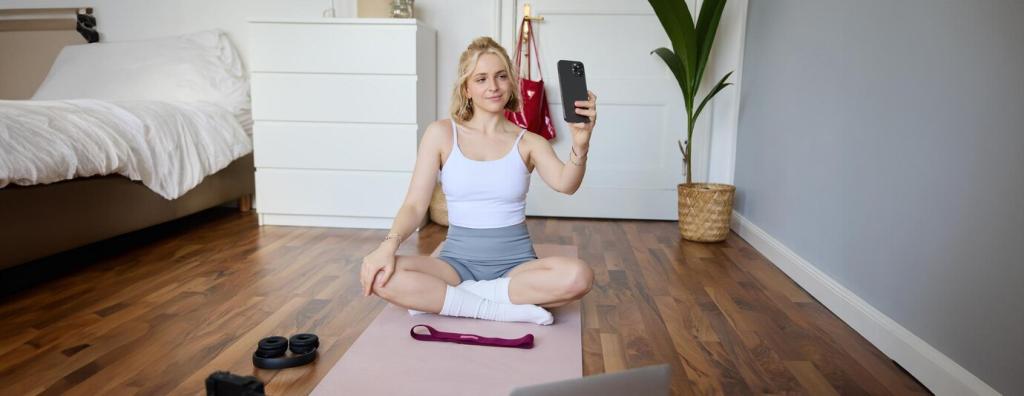Make It Yours: How to Personalize Your Fitness Regimen
Start With Why: Goals That Actually Guide Your Plan
Turn vague wishes into precise targets
Replace “get fit” with a specific goal like “deadlift my bodyweight” or “run a 5K in 30 minutes.” Use timeframes, measurable markers, and reasons that genuinely excite you to steer consistent action.
Anchor your goals to feelings, not only numbers
Track how workouts affect mood, focus, and sleep. Feeling calmer after strength days or energized after intervals helps you personalize your regimen around outcomes you truly value and will sustain.
Share your why with accountability partners
Tell a friend, coach, or our community what you’re aiming for and why. Public commitments, even small ones, make it easier to adapt plans without abandoning your personalized path.
Assess Your Baseline: Data That Helps, Not Haunts
If endurance is your priority, record resting heart rate, step counts, and conversational pace. For strength, note five-rep maxes and movement quality. Keep baseline notes to celebrate progress later.

Design Your Mix: Strength, Cardio, Mobility—On Your Terms
Choose the right primary driver
If you want muscle and bone strength, prioritize progressive overload two to four times weekly. For heart health, aim for at least 150 minutes of moderate cardio, plus short, well-recovered intervals.
Make it fun or it won’t get done
Pick activities you like: kettlebells, hiking, dance, rowing, or power walks with podcasts. Enjoyment dramatically increases adherence, turning your personalized regimen into a lifestyle you keep.
Mobility and movement snacks for real life
Sprinkle five-minute mobility sessions between meetings or after commutes. Consistent micro-doses—hips, thoracic spine, ankles—keep you moving well and reduce barriers to longer workouts.
Nutrition That Fits Your Body and Schedule
01
Most strength and recomposition goals benefit from roughly 1.6–2.2 grams of protein per kilogram bodyweight. Adjust calories based on body changes, performance, hunger, and mood stability.
02
A balanced pre-workout meal two to three hours before training and a protein-rich meal afterward can aid energy and recovery. Personalize based on digestion, schedule, and session intensity.
03
Choose foods you enjoy and can afford, prepared in ways you can maintain. Personalization honors your life context, helping you stick with nourishing patterns month after month.
Recovery, Adaptation, and Burnout Prevention
Aim for seven to nine hours most nights. Keep a wind-down routine, cooler room, and consistent schedule. Better sleep often outperforms extra volume for strength, fat loss, and mood.
Recovery, Adaptation, and Burnout Prevention
Use breathwork, short walks, journaling, or sunlight breaks to lower stress load. When life stress spikes, reduce training intensity or volume slightly to stay consistent without crashing.



Real-Life Personalization: Stories and Situations
The traveler’s two-bag workout
Maya swapped five HIIT classes for hotel-room circuits, resistance bands, and stair sprints. Ten focused minutes daily maintained cardio, mobility, and motivation until she returned to barbells.


From knee pain to steady progress
Jordan replaced deep lunges with supported split squats, added tempo control, and extended warm-ups. Pain reduced, confidence rose, and weekly walks returned—proof that smart modifications accelerate progress.
